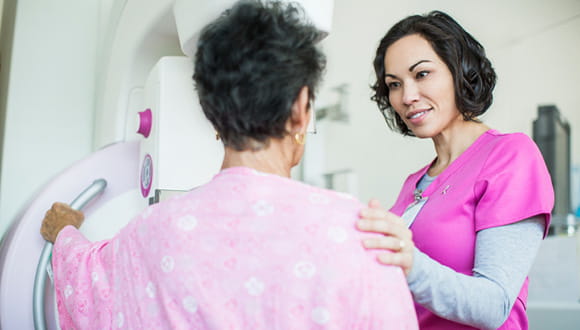October is Breast Cancer Awareness Month and serves as a reminder to many women that they should schedule their annual screening mammograms.
Dr. Ana Benveniste, a breast radiologist at Houston Methodist, recommends that women with an average risk of breast cancer should start having screening mammograms at age 40. Those identified by their health care provider as having a higher risk for cancer may start as young as age 30.
While many women will make time for their mammogram, some may think it’s not a big deal to skip it for one reason or another.
My last mammogram was normal. I don’t feel anything suspicious in my breast. I don’t even have a family history of breast cancer. I don’t have time.
Below are a few reasons Dr. Benveniste thinks it’s important to make time for your mammogram every single year.
Mammograms catch breast cancer early, when it’s easiest to treat
Having a mammogram every year is the best way to ensure that a breast tumor is caught early. And this matters since early detection of breast cancer greatly improves a woman’s prognosis.
“Catching breast cancer early is critical,” says Dr. Benveniste.
That’s because finding breast cancer early via mammography means that a woman is more likely to save her breast.
“When diagnosed early, a woman may be able to have a lumpectomy, a small surgery that removes just the tumor, and some radiation to ensure the tumor doesn’t return,” explains Dr. Benveniste. “But if a tumor isn’t detected until it is larger, chemotherapy and mastectomy, a surgery to remove the entire breast, may be required.”
Mammograms save lives
It’s as simple as that. Research shows that women beginning yearly mammograms at age 40 (or younger if she has a higher risk) reduce their chances of dying from breast cancer by almost 40%.
“I am often asked about how I feel about alternative imaging methods or am faced with people wanting to have a breast ultrasound alone,” states Dr. Benveniste. “The point I always try to drive home is that a screening mammogram is the only imaging modality that is statistically proven to save lives in regard to breast cancer. Ultrasounds alone will not benefit a patient, and may miss the opportunity to diagnose a cancer.”
There is a recent advancement in mammogram technology, called a 3D mammogram (or breast tomosynthesis), that Dr. Benveniste recommends.
“3D mammograms can detect more cancers than 2D mammograms, as well as reduce the risk of unnecessary re-imaging due to false positives,” Dr. Benveniste explains. “All women should opt for a 3D mammogram over a traditional 2D mammogram, since the dose of radiation is similar and it feels same to the woman, but it gives the radiologist much more information about a woman's breasts.”
1 in 8 Women in the U.S. will develop breast cancer
Except for skin cancer, breast cancer is the most common cancer diagnosed in women in the U.S., and is the second leading cause of cancer deaths. According to the Center for Disease Control and Prevention, about 245,000 cases of breast cancer are diagnosed in women each year.
“The reality is that every woman has at least a 12% chance of developing breast cancer,” Dr. Benveniste explains.
“Regardless of your risk, you should continue having a mammogram every single year as long as you are in good health,” says Dr. Benveniste, “as our goal is to provide safe, annual screening mammograms and help detect these cancers early.”
Breast cancer is not just a family disease
You may have heard about abnormal breast cancer genes (such as the BRCA genes) from friends or by following news articles about celebrities like Angelina Jolie, but mutations in breast cancer genes are much less common than people think.
“The fact is that only about 5% to 10% of breast cancers are caused by abnormal genes passed from parent to a child.”
What this doesn’t mean, however, is that it’s okay for women to skip their annual mammograms if they don’t have a relative with breast cancer.






